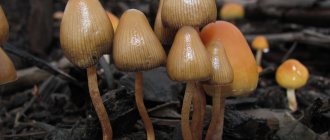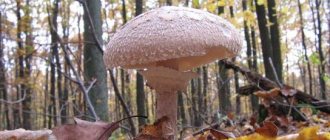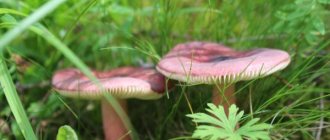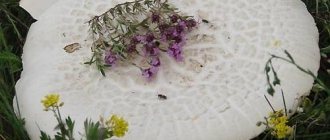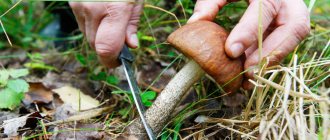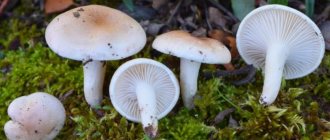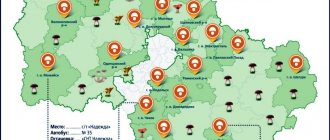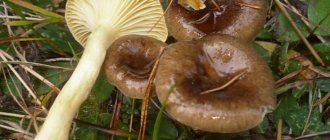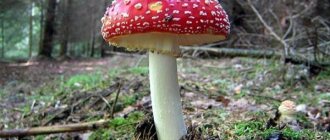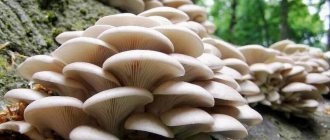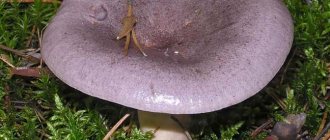These are plants that belong to the class “mushrooms”. They have psychoactive, mildly toxic substances in their fruiting bodies that have a strong effect on the psyche. The use of these plants produces powerful distortions of consciousness and experiences comparable in intensity to those caused by psychedelics.
Since ancient times, psychedelic mushrooms have been used by humanity to perform magical rites and religious ceremonies. They were used as enthogens and psychostimulants. Some sources report that regular uncontrolled use of hallucinogenic mushrooms leads to a destructive effect on the psyche and disruption of the normal functioning of the body.
Since the Stone Age, humanity has used psychoactive substances found in mushrooms. There is a lot of evidence of this. Such plants were attributed magical properties and were used in magical rituals.
The most ancient evidence of the use of hallucinogenic mushrooms was found in Africa.
They are more than nine thousand years old. Drawings containing evidence of the use of mushrooms have been discovered:
- Tassilin Ajere (Algeria),
- in the Tadrart-Akakus mountains (Libya),
- on the Ennedi plateau (Chad),
- in Jebel Ounat (Egypt).
The Rig Veda text (India) contains more than a thousand hymns that mention the sacred drink Soma, which according to scientists was prepared from red fly agaric mushrooms. Soma, according to the Indians, extended life, allowed one to maintain health, and enabled the person who consumed it to merge with the deities.
In the era of early Christianity and the Middle Ages in Tunisia and Western Europe, frescoes were created that depicted trees on which hallucinogens grew, which makes it possible to talk about the cult of mushrooms. They were used in Ancient Greece to perform the Eleusinian Mysteries.
There is evidence of the use of hallucinogens by the Mayan Indians. For example, red fly agaric was already used three thousand years ago as a component of rituals by selected and dedicated clergy. The Aztecs called the fly agaric “the body of god” (teonacatl). Temples dating back 2,500 years were discovered in Guatemala, where sculptures of mushrooms with human faces were placed. To this day, the Indians of Central America have preserved rituals using hallucinogenic mushrooms.
In Northern Europe, in Kamchatka, Chukotka and Taimyr, these plants were used by shamans and doctors to perform rituals and treat people with mental problems. 15 methods of using fly agarics have been preserved. They were consumed fried, dried, soaked, extracts and decoctions were prepared, and the meat of animals that had eaten mushrooms was eaten. According to the results of scientific research, those segments of the population that could not use sacred plants drank the urine of shamans. The fact is that salts of ibotenic acid, which is a hallucinogen, accumulate in the urine. It remained there even after five times of use.
When fighting wars, mushroom caps were used to enhance the military power of men.
For a normal European, half a mushroom is enough to achieve maximum effect. 3 mushrooms can cause fatal poisoning. Warriors consumed up to 11 mushrooms before the battle. There is evidence that one warrior could eat 21 mushrooms before a battle.
In the 60s of the last century, the fashion for using hallucinogens spread among the white population. Subsequently, this fashion appeared in Europe. By the end of the 20th and beginning of the 21st centuries, hallucinogenic mushrooms replaced psychedelics in popularity.
Description of psilocybin mushrooms
To protect yourself, it is strongly recommended that you refrain from any experiments with such varieties, and also study their structure and appearance, which will avoid accidentally ending up with toxic specimens in the basket.
And although there are few varieties of psilocybin species (this is the name given to mushrooms that have psychotropic properties due to the high content of psilocybin), there are several general characteristics, knowledge of which will help you avoid mistakes during a “silent hunt.”
Structure and features of the species
Most often, glucogenic mushrooms have a high thin stalk of a cartilaginous fibrous type, which can grow up to 10 cm, not exceeding 0.5 cm in diameter. The cap of psilocybes is small, cone-shaped, elongated, with a pointed middle, up to 2 cm in diameter. Often the edges are the caps are bent inward, covering the lamellar hymenophore descending to the stalk.
Thin, frequent plates are light in color, turning into a rich purple hue as the species matures. They contain brown or purple spores of granular or ellipsoid shape, which ensure widespread reproduction of representatives of this species.
The color of the fruiting body can completely coincide with the stem or, on the contrary, contrast with it, having a pronounced olive, faded yellowish or reddish tint.
Precautionary measures
As mentioned, collecting hallucinogens can be very dangerous. Some varieties contain compounds that can cause serious harm to health, even causing organ failure and death. Therefore, the following tutorial should only be used as a theoretical framework for those interested in psilocybe hunting.
If you are serious about this, joining a mushroom picking group is highly recommended. This will help you build connections within a community of like-minded people, as well as provide hands-on experience in harvesting a variety of varieties that are safe to eat. This will enrich your knowledge, which will eventually be used to hunt for hallucinogens. Of course, you don't have to mention that your ultimate goal is to hunt for the "magical variety."
In addition, laws regarding the collection of fruiting bodies vary from country to country. Regulations regarding fresh mushrooms containing psilocybin are especially strict. Therefore, first you need to study the legal situation in a particular region and adhere to it.
Places and times of fruiting
You can often hear the opinion that hallucinogenic mushrooms grow mainly on the North American continent, being a favorite ritual raw material of aborigines and tribal shamans who perform all kinds of healing rituals. In fact, the distribution of psilocybins is impressive in its scale, often occurring in Eurasia.
Distribution area in Russia
And since most of the Eurasian continent is occupied by the Russian Federation, it is not at all surprising that in its vast expanses there are many glucogenic mushroom varieties (according to scientists, their number is more than 500 species). And since they are all saprophytes, the ideal habitat for magicians is an area close to human settlements with a large number of organic remains:
- cattle manure;
- humus;
- decaying wood;
- plowed fields;
- meadows and fields for grazing animals.
Moist environments are also optimal for the growth of these hallucinogens, which is why they can often be seen in estuaries and floodplains, near streams, and even on irrigated lawns of parks and homes. They grow in colonies, which means that when you see one mushroom, you can find a whole family in its immediate vicinity.
Some specimens are concentrated right along roads and busy highways, starting to appear in August and ending their fruiting only in early January. This feature contributes to the wide distribution of the family, which even does not tolerate the subarctic climate.
When to start hunting
The best time to search for hallucinogens is a cool time of year with high humidity. This is because hotter, drier summer weather overloads the mycelium, causing it to spread its underground threads. When wetter autumn conditions arrive, psychedelic is able to bear fruit at an incredible rate. Thanks to this, large accumulations of mushrooms appear, which greatly facilitates their search. Of course, drug-containing specimens can also be found in the summer after rains, but it is the constant autumn dampness that leads to the peak of fruiting.
Varieties of hallucinogenic mushrooms
Having figured out what mushrooms that can cause changes in consciousness look like and where they grow, it doesn’t hurt to pay attention to the most common representatives of this family. And if it is possible to at least superficially study the structural features of these varieties, then in the future there should not be any problems with their identification.
Fun mushrooms
Perhaps the most common in the near Moscow region and other Russian regions is Veselushka, also known as Psilocybe semilanceolata, which retains its toxic properties both in fresh and dried form. Small dome-shaped fungi on a thin curved stalk with a smooth cap surface have a dark gray hymenophore.
These fruits grow mainly in open areas in grass and nitrogen-fertilized soil. It is noteworthy that not all merry mushrooms contain a critical amount of psilocybin, and often the effect of their use largely depends on the climatic conditions of growth and the way the body perceives the substance. However, this is not a reason to taste them.
And if the mushrooms do have an effect, it will happen within 20-50 minutes, despite the fact that the effect itself can last from 4 to 7 hours, accompanied by hallucinations. There are often cases when the effect of toxic components on the central nervous system is so strong that the patient never recovers in the future, suffering from serious mental disorders or partial/complete loss of reason.
Paneolus bellflower
Unlike Veselushka, this variety is considered early, beginning to appear in the young grass of valleys and river floodplains already in mid-April. Among the features of the species are a darker and wider cap of red in youth and a gray-brown tint in old age, with characteristic cracks and remnants of a blanket along the border, tasteless brittle flesh and a cavity inside a thin leg that thickens downwards, which can be either curved or perfectly smooth .
Hay beetle
Fungi begin to appear in early spring, continuing to grow until the first hard frost. The two-color color of the variety with a contrasting transition from light beige to chocolate makes it quite recognizable. The name itself suggests that the favorite growing environment of the variety is soil well fertilized with animal excrement.
The condition of the surface of the fungus largely depends on the local climate, and if it is humid and damp outside, the cap of the dung beetle becomes soft, covered with numerous grooves. In sunny, dry weather, the mushroom, on the contrary, begins to crack and peel off.
Mycena pure
A rather rare variety for European countries, listed in the Red Book, with a pale gray-brown color, a lamellar hymenophore close to white, a fragile stalk empty inside and a moist mucous surface.
The flesh of the fungus is watery, exudes an unpleasant odor and contains a hallucinogenic substance such as muscarine, which is why in some sources mycena is classified as poisonous. Like many other saprophytes, it grows on rotting wood and fallen leaves.
Psilocybe montana
The second name of this variety of psilocybe is Montana, which is due to its bright brown color and masonry conical cap with a pronounced nipple. The leg of the mountain mushroom is stronger, often curved closer to the base and without a protective ring in its middle part.
The hymenophore is lamellar, but very rare, often becoming bare as the fruits mature, lifting up the brims of their hats. These mushrooms grow in forests and wetlands, where there is a lot of lichen and ferns, although entire families are often found in sandstones.
Checking spore prints
The next step is to identify the spores of the fruiting bodies you found. This is certainly a very important part when trying to distinguish one species from another, but it should never be done without first analyzing external data.
To get a spore print, take a mushroom, separate the cap from the stem with a sharp knife and place it “gills” on a sheet of paper. If the psychedelic you need has a white or light trace, use black materials.
Leave the cap alone for 30-60 minutes. After this time, remove the top part of the fruit. A clear imprint will remain on the sheet. The characteristics of spore traces are usually sufficient to determine the genus by eye, especially in combination with an analysis of the visual features of the found hallucinogen. To understand what specific strain or species you have in front of you, you will likely need a microscope and in-depth knowledge of the field.
If you don't want to spoil the mushroom, you can cut a hole in the paper. Its diameter should correspond to the size of the leg. Then simply insert the fruit into it, lean the paper against the bottom of the cap and wait.
Method for obtaining an impression without separating the stem
Spore prints can also be collected in a sterile environment for long-term storage. This is convenient if you need to show the trace to someone else. This is also very useful if you want to grow your own culture for further reference and analysis, since the spores are drawn into syringes from sterile prints.
Spore prints of P. cubensis
The effect of psilocybin mushrooms on the body
Representatives of the hallucinogenic group contain two substances: psilocybin and psilocin, and it is the first of them that is especially dangerous.
Curious!
Once in the intestines, this alkaloid is destroyed, losing its toxicity twice, but at the same time, even this concentration is enough to feel all the “delights” of the effects of a toxic substance.
Symptoms of poisoning
You may be interested in: How do edible talkers differ from false mushrooms? How many days after rain do mushrooms grow? Bitter mushroom: photo and detailed description
The effect of the mushroom, depending on the variety, can be felt within the first hour, since once in the blood, its toxins are quickly redirected towards the nervous system, having a direct effect on such sections as the anterior and posterior parts of the lumbar gyrus, as well as medial prefrontal area.
Such changes manifest themselves in the form of such negative symptoms as hallucinations, disorientation in space, depersonalization, aggression, panic, loss of consciousness, loss of correct color perception, the development of excessive visual and auditory sensitivity, as well as impaired speech function. Simply put, a person may not understand where he is and who he is, having ceased to recognize others, the area and the situation, which from the outside looks at least creepy.
Consequences
No one will be able to accurately determine what consequences await the magic taster, since the further development of the situation is influenced by many factors, ranging from the state of health and the victim’s body as a whole to the concentration of the mushroom poison. Tasters compare the effect of such mushrooms with LSD, claiming that, unlike a chemical drug, it is more gentle and natural.
Medicine knows of cases where the clouded mind of those who tried psychotropic mushrooms was never restored, although in some cases patients were able to be pulled out of this state through long-term psychological rehabilitation. In addition, after neutralizing the effect of mushrooms for several days, the so-called glow effect can be observed, with its characteristic depression or tranquility.
Benefits and harms
Fortunately, in the vast majority of cases, recovery from this state, even without the help of doctors, is not accompanied by either abstinence or addiction. However, it is better not to take risks and consult a doctor immediately, since some mushrooms can lead to coma and even death, although such cases are isolated.
Important!
Their use is considered especially dangerous for children and expectant mothers, although those people who suffer from serious mental disorders and epileptic seizures are also at risk.
As for the benefits, it is quite possible to extract it even from poisonous fly agarics, which is what healers do when they make healing potions and infusions. But it is better not to process such fruits yourself; at the very least, use their extracts and squeezes exclusively for external use.
Use in medicine
Toxic mushrooms are also widely used in the pharmaceutical industry, being used to prepare painkillers used in palliative medicine, when all efforts are aimed at improving the general well-being of a terminally ill patient.
Dangerous species
It is common knowledge that mushrooms come in different shapes and sizes, as well as varying levels of toxicity. Some can cause mild poisoning, while others can be fatal. Sometimes the differences in their appearance are insignificant, but still, it is necessary to carefully check all the characteristics before picking up the hallucinogen.
There are thousands of different varieties, and of these, only a few hundred are considered poisonous, and a few dozen are considered deadly. That being said, any mushroom picker collecting both regular and psychedelic specimens must be very careful. Although there are a relatively small number of poisonous species, they do exist, and some of them are quite widespread. Poisoning from the above-mentioned product is never pleasant and can scare a beginner away from a fun, rewarding and active hobby.
Just remember that this guide to hunting narcotic fruit is intended to be used as a theoretical basis for academic interest or to join an experienced and professional group of mushroom hunters who can properly guide and expand your knowledge. Also, such a step will protect the amateur from collisions with life-threatening fruiting bodies.
Legal restrictions
Despite the fact that psilocybes were not officially recognized as drugs, their alternative status became the reason for prohibiting the unauthorized collection, use, and even more so the distribution of such raw materials.
The Russian Federation in this regard is no exception to the rule, although the absence of a criminal article for the collection, storage and consumption of mushrooms, of course, makes its negative contribution. Every year, thousands of people continue to poison themselves with this potion in search of thrills, subsequently justifying their own actions as incompetence during a “silent hunt.”
And if a single use of such fruits can still occur without consequences for health, then regular experiments of this kind can easily provoke schizophrenia. This is what you should remember first of all if the ridiculous thought of trying a forbidden mushroom comes to mind.
Basics
Now that you have been warned about the possible danger, let's move on to the specifics. Firstly, determining the exact strain can sometimes be extremely difficult even for an experienced mushroom picker. As a consequence, most beginners tend to focus on a genus of mushrooms.
A genus is a group of species that share the same characteristics. For example, individuals of the genus Psilocybe have strong psychotropic properties. By being able to identify the genus, a new hunter has a good chance of finding what he wants without getting poisoned. This is the minimum knowledge required for an amateur. After acquiring them, you will be able to develop your skills further.
Determining the genus consists of two main tasks. First, you need to pay attention to the external features of the mushroom, and then analyze the characteristics of the spore prints. A book on the classification of fruiting bodies can be very useful as a reference material for completing the idea.
